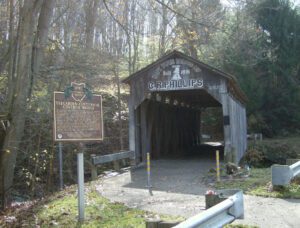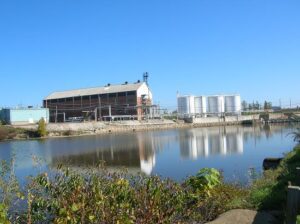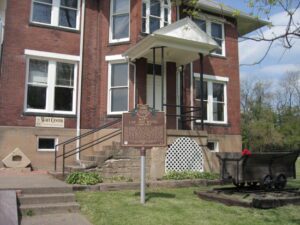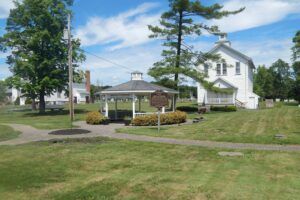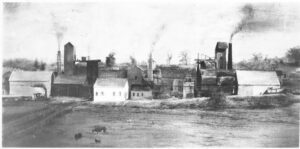, OH
The Teegarden-Centennial Covered Bridge, constructed primarily of white oak is of Multiple King Post design spanning 67 feet. It was built nearly 100 years after the birth of the nation. Located on Eagleton Road, just off Teegarden Road, it is still at its original location, spanning the Middle Fork of the Little Beaver Creek in Eagleton’s Glen Park. It remained in use until 1992 when it was bypassed by a new concrete structure. The official contract for the construction of the bridge was awarded to Jeremiah C. Mountz in June of 1875. The stonework for the abutments was awarded to David Reese and painting of the original structure to George W. Akin in 1876. Members of Highland Christian Church came here to be baptized by immersion. There were over 250 covered bridges in Columbiana County, including at least 16 railroad covered bridges. The Teegarden-Centennial Covered Bridge is one of only five still remaining.
, OH
Attracted by the availability of raw materials and railroad transportation, the Pittsburgh Plate Glass Company (PPG) built a plant here in 1899 to make soda ash for the company’s glassmaking operations. This plant began production in 1900 as the Columbia Chemical Company and represents the beginning of PPG’s diversified chemical manufacturing operations. During the 20th century this plant operated the world’s deepest (at 2,200 feet) limestone mine and manufactured commodity chemicals such as chlorine, caustic soda, and calcium chloride. By 2000, manufacture of specialty chemicals for the optical, pharmaceutical, printing, and rubber industries superseded mining and commodity chemical manufacturing. PPG’s reclamation of its former soda ash waste disposal sites, known as “lime lakes,” has won recognition for environmental stewardship.
, OH
Joseph Watt and son James H. started a small foundry in 1862 making plow points, window sash weights, and heating stoves. Later, brothers Stewart, Ross, and John W. joined and the name became J.H. Watt and Brothers. Securing a patent for a self-oiling mine car wheel, the business expanded to this 27-acre site. In 1891, Ohio gubernatorial candidate, and later U.S. president, William McKinley, dedicated the buildings. By 1901, over 135 were employed by Watt Mining Car Wheel Company producing mine and rail cars for U.S. and foreign markets. The Watt Car and Wheel Company was sold in 1966 to German interests and closed in 1996, ending an era of employment for generations of local people.
, OH
The Connecticut Land Company surveyed Vienna Township as Township 4, Range 2, in 1798. The Township’s proprietors were Ephraim Root, Uriel Holmes, Jr., and Timothy Burr. Survey members Dennis Clark Palmer, Isaac Flower, and Samuel Hutchins and their families were the first to settle here in 1799. Between 1810 and 1840, Vienna was a center for the wooden works clock industry in Trumbull County and the Connecticut Western Reserve, with six factories located amid farms, sawmills, and quarries. After coal was discovered in 1866, over twenty mines were opened, bringing boom times for two decades. Vienna’s miners helped to bring about Ohio’s first mining safety law in 1874. Vienna was the birthplace of abolitionist and attorney John Hutchins (1812-1891), who represented Trumbull and Ashtabula counties in the United States Congress (1859-1863) and raised troops during the Civil War.
, OH
The discovery in the mid-19th century of iron-rich black band ore in this region helped revitalize Mahoning Valley’s iron industry. The land now called Mineral Ridge was primarily a farming community before the 1850s. In the 1830s, coal was discovered and mining began on a small scale. For years, it was believed that the coal seam sat on top of a layer of slate, which was considered to be of little worth. In the mid-1850s, however, John Lewis, superintendent of the Mineral Ridge Coal Mines, identified what was previously thought to be slate as valuable black band ore instead. (Continued on other side)


